2021 Spring Conference Videos Available Now
Those that attended GBA’s 2021 Spring Conference 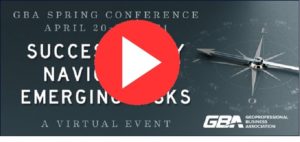 agreed that the presentations were educational, entertaining, and inspiring. Now you can watch, listen to, and learn from these speakers too, on your own schedule.
agreed that the presentations were educational, entertaining, and inspiring. Now you can watch, listen to, and learn from these speakers too, on your own schedule.
These videos are available for all GBA members on-demand at your convenience.
Presentations Include:
• Gary T. Torosian: Business Snapshot Summary
• Guy Marcozzi, P.E., D. GE, LEED AP: Unlock the Future and Elevate Performance
• Expert Panel: BD & Marketing: Emerging Risks and Opportunities
• Kimball Olsen, P.E., DBIA: Design-Build Considerations: Helping You Manage Risk
• Expert Panel: We Were Hacked! Don’t Let it Happen to Your Firm!
• Erica Davis: The Changing Nature of Cyber Risk
• Expert Panel: HR Leaders Share How They Maintain and Acquire Their Most Valuable Asset – Their People
Featured Keynotes:
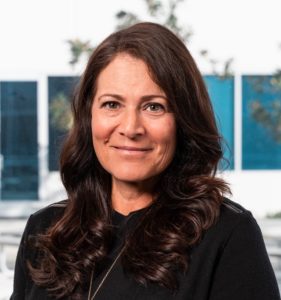 Lisa Napolitano: Strategic Client Management: The Key to Driving Growth & Competitive Advantage
Lisa Napolitano: Strategic Client Management: The Key to Driving Growth & Competitive Advantage
Lisa Napolitano shares how smart companies during turbulent economic times find ways to leverage the uncertainty and draw closer to their clients as they, too, grapple with pressure and change. Such times offer a unique opportunity to position your firm as a trusted advisor able to bring fresh ideas to the table as key decisions are being made. Firms with a deliberate Strategic Client Management approach are already well positioned to take advantage of their relationship capital and gain the client’s share of mind. But it’s never too late to rethink how you manage clients. In fact, now is the perfect time to invest in client relationships and demonstrate your relevance as a supplier and partner.
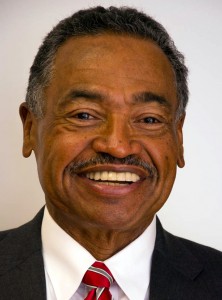 L. Tyrone Holt, Esq.: Pandemic-Forced Changes to Handling Professional Liability Claims
L. Tyrone Holt, Esq.: Pandemic-Forced Changes to Handling Professional Liability Claims
The pandemic forced all parties involved in professional liability claims to adapt to changes in communication methods, business practices, and negotiation procedures. Mediations were virtual, “hot tub” sessions with experts were challenging to execute, graphics had to be entirely digital instead of hard copy, and the entire process was slowed as the systems adjusted. Those changes in some ways improved the process, but in many ways created limitations and frustrations. On the positive side, travel time and expenses were eliminated, but on the negative side it is much more difficult to read body language over Zoom or Teams. In some cases, the changes stirred concerns that an unfair settlement might be more likely. As the pandemic eases in 2021, we may think that these changes will all revert to the old ways, but that is not entirely true. Many of these changes will stick, whether you like them or not. L. Tyrone Holt, Esq. (Holt Group, LLC) discusses the pandemic-forced changes in handling professional liability claims, the pros and cons of those changes, and the long-term impact the industry is likely to experience.
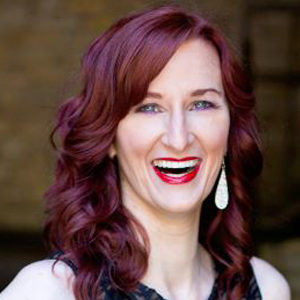 Jessica Rector: Ignite the Burn Out: How Leadership Inspires the Disengaged
Jessica Rector: Ignite the Burn Out: How Leadership Inspires the Disengaged
The top issues impacting individuals today are burnout and stress. Likely, one if not both of these issues have affected you or someone within your firm during the past 12 months. Burnout and stress are currently at an all-time high, and with many the home and work life is blurred and there doesn’t seem to be an end in sight. Employees are feeling overwhelmed, unappreciated, and un-recognized, which decreases productivity, attitude, and performance. The #1 expense to organizations is burnout. It is an organizational and leadership issue affecting morale and bottom-line results. Research shows even the “best place to work for” Google has 53% burnout. Have you considered how much employee burnout is really costing your firm? Learn from Jessica Rector, MBA (JessICAREctor Enterprises) as she shares her research and shows how your organization can proactively anticipate burnout, how teams can stop stress from spreading to other work and life areas, and how leaders can ignite, motivate, and empower employees to build resilience, create a thriving culture, and tackle risks, uncertainty and challenges without burnout.
 Steve Farber: Lead with Love: The Strategic Advantage for a Physically-Distanced World.
Steve Farber: Lead with Love: The Strategic Advantage for a Physically-Distanced World.
From the bestselling author of The Radical Leap comes the first keynote to directly address love as a hard-core business principle that generates measurable results – now more than ever. Over the last 10 years, the business world has spent close to a trillion dollars on leadership development; yet 73% of people are still disengaged in their work. 10 years ago, that number was 70%.
Something is dreadfully wrong. Steve Farber (Extreme Leadership) has learned that the solution is to do something more radical, something extreme.
Watch Conference Proceedings: HERE
 “get-to-know-you” piece, but if you’ve ever written one, you understand my pain. I am as ordinary as they come. I have decisions guided by luck and happenstance. I have moments of pure brilliance and others of comedic naivety. I’ve worked hard with my fair share of all-nighters to meet a deadline. Every day I count my blessings that I can earn a comfortable living doing work that I find meaningful, rewarding, and challenging. It is humbling to think of those few key moments where life could have taken me in different directions.
“get-to-know-you” piece, but if you’ve ever written one, you understand my pain. I am as ordinary as they come. I have decisions guided by luck and happenstance. I have moments of pure brilliance and others of comedic naivety. I’ve worked hard with my fair share of all-nighters to meet a deadline. Every day I count my blessings that I can earn a comfortable living doing work that I find meaningful, rewarding, and challenging. It is humbling to think of those few key moments where life could have taken me in different directions. space in the classroom. For an honors student accustomed to teachers bestowing privileges for good grades and cooperation, this was unusual. Why couldn’t I use the good sharpener? Why did I have to sacrifice my graphite to the gods of note-taking torture?
space in the classroom. For an honors student accustomed to teachers bestowing privileges for good grades and cooperation, this was unusual. Why couldn’t I use the good sharpener? Why did I have to sacrifice my graphite to the gods of note-taking torture?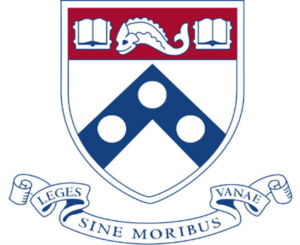 lucky to have the grades to be accepted at the University of Pennsylvania, with just enough financial aid to make it possible. I was lucky to have supportive parents who let a naïve kid from Western Massachusetts move six hours away to live on her own in West Philadelphia. I was lucky my TA persuaded me to sign up for the EIT test while still a senior in college, so I graduated with that box checked.
lucky to have the grades to be accepted at the University of Pennsylvania, with just enough financial aid to make it possible. I was lucky to have supportive parents who let a naïve kid from Western Massachusetts move six hours away to live on her own in West Philadelphia. I was lucky my TA persuaded me to sign up for the EIT test while still a senior in college, so I graduated with that box checked.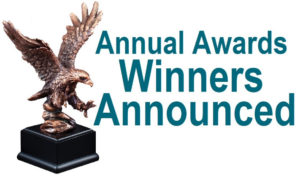 all the resources we produce for our members, our contributions to the geoprofessional community, and our conferences are mostly driven by volunteer leaders.
all the resources we produce for our members, our contributions to the geoprofessional community, and our conferences are mostly driven by volunteer leaders.
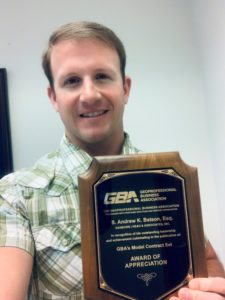 Sanborn Head & Associates. This year, Andrew took on the challenge to update our GBA Model Contract Set. Spending many hours of his own personal time, Andrew went through GBA’s existing contract set and updated each one so that you, our members, can utilize these important documents to better mitigate risk during the contract portion of projects that you manage.
Sanborn Head & Associates. This year, Andrew took on the challenge to update our GBA Model Contract Set. Spending many hours of his own personal time, Andrew went through GBA’s existing contract set and updated each one so that you, our members, can utilize these important documents to better mitigate risk during the contract portion of projects that you manage. For several years, GBA has been tracking the engagement of member-firms through 5 measurements that we found to be most important indicators of the value members were receiving from membership. Ultimately, engagement also indicates the value of membership to your employees which we feel is paramount to delivering our mission.
For several years, GBA has been tracking the engagement of member-firms through 5 measurements that we found to be most important indicators of the value members were receiving from membership. Ultimately, engagement also indicates the value of membership to your employees which we feel is paramount to delivering our mission.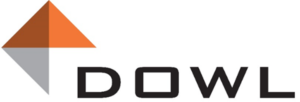
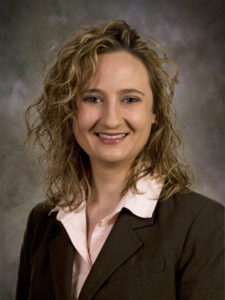 Teresa Peterson recently stepped down from her leadership role as the Vice Chair of the Emerging Issues and Trends (EIT) Committee to accept her nomination to the GBA Board of Directors. Ms. Peterson was the Vice Chair of the EIT Committee for three years.
Teresa Peterson recently stepped down from her leadership role as the Vice Chair of the Emerging Issues and Trends (EIT) Committee to accept her nomination to the GBA Board of Directors. Ms. Peterson was the Vice Chair of the EIT Committee for three years.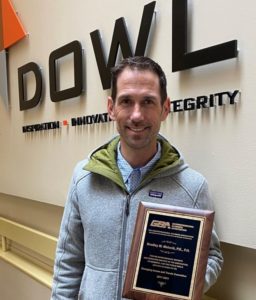 role as the Chair of the Emerging Issues and Trends Committee to accept his nomination to the GBA Board of Directors. He was the Chair of the EIT Committee for four years.
role as the Chair of the Emerging Issues and Trends Committee to accept his nomination to the GBA Board of Directors. He was the Chair of the EIT Committee for four years.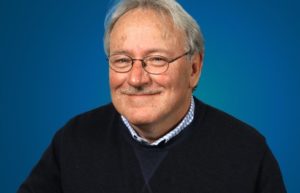 to Elevate our Profession. Rick is the perfect individual to lead this effort and with the full support of the GBA Committees, Board, and Staff, we look forward to great outcomes from this new group.
to Elevate our Profession. Rick is the perfect individual to lead this effort and with the full support of the GBA Committees, Board, and Staff, we look forward to great outcomes from this new group.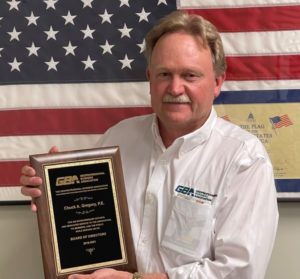 duties he led this committee at the same time. Under Chuck’s leadership the RCC has been very productive and has helped support GBA’s unofficial motto “We Get Stuff Done”.
duties he led this committee at the same time. Under Chuck’s leadership the RCC has been very productive and has helped support GBA’s unofficial motto “We Get Stuff Done”.
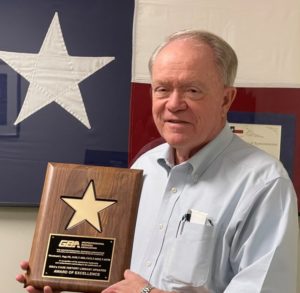 refreshed, and compiled, resulting in this library of resources being the most popular downloads of all GBA reference material.
refreshed, and compiled, resulting in this library of resources being the most popular downloads of all GBA reference material. President, Ken Johnston presented our 2020-2021 President’s Award to David Coduto in recognition of his many contributions that support GBA’s purpose and strategy through leadership and influence.
President, Ken Johnston presented our 2020-2021 President’s Award to David Coduto in recognition of his many contributions that support GBA’s purpose and strategy through leadership and influence.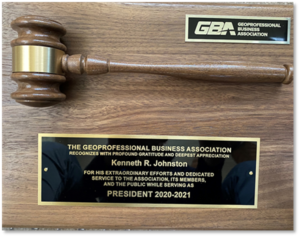
 with expansive clay soils. The changes would reduce the risk of sewer failures and thereby reduce the professional liability exposure for consulting geotechnical engineers. The proposed code changes, which are referred to as Proposal P8-21 by the ICC, were initiated by the Structural Engineers Association of Texas and are also supported by the American Institute of Architects and American Council of Engineering Companies (ACEC) of Texas. GBA’s testimony was provided virtually by Mr. Steve Wendland, P.E, R.G., DGE of GeoEngineers, Inc., as shown in the screen shot below. Steve serves on GBA’s Board of Directors and has significant experience in the topics addressed by the proposed code revisions.
with expansive clay soils. The changes would reduce the risk of sewer failures and thereby reduce the professional liability exposure for consulting geotechnical engineers. The proposed code changes, which are referred to as Proposal P8-21 by the ICC, were initiated by the Structural Engineers Association of Texas and are also supported by the American Institute of Architects and American Council of Engineering Companies (ACEC) of Texas. GBA’s testimony was provided virtually by Mr. Steve Wendland, P.E, R.G., DGE of GeoEngineers, Inc., as shown in the screen shot below. Steve serves on GBA’s Board of Directors and has significant experience in the topics addressed by the proposed code revisions.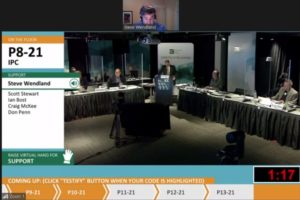 methods that have had a high failure rate. These sewer failures have led to expensive repairs and frequent litigation, including claims against geotechnical engineers like the project that is summarized in GBA Case History #108. A new Section 305.8 of the IPC would be created that would prohibit plumbing, hangers, or supports below a floor slab to be in contact with soil or any materials that are in contact with soil. Also, it would prohibit lifting of a slab and plumbing as an assembly to create the void space unless the under-floor space is a crawlspace with access to allow inspection of plumbing after lifting. More details can be found on the
methods that have had a high failure rate. These sewer failures have led to expensive repairs and frequent litigation, including claims against geotechnical engineers like the project that is summarized in GBA Case History #108. A new Section 305.8 of the IPC would be created that would prohibit plumbing, hangers, or supports below a floor slab to be in contact with soil or any materials that are in contact with soil. Also, it would prohibit lifting of a slab and plumbing as an assembly to create the void space unless the under-floor space is a crawlspace with access to allow inspection of plumbing after lifting. More details can be found on the  Business Association (GBA), a not-for-profit association of geoprofessional firms. Mr. Blackburn took office during ceremonies at GBA’s annual meeting held virtually on April 21, 2021.
Business Association (GBA), a not-for-profit association of geoprofessional firms. Mr. Blackburn took office during ceremonies at GBA’s annual meeting held virtually on April 21, 2021. • Why contracts matter.
• Why contracts matter. • Lisa Gamblin, Esq. – Vice President, Claims & Risk Management at Terra Insurance Co.
• Lisa Gamblin, Esq. – Vice President, Claims & Risk Management at Terra Insurance Co.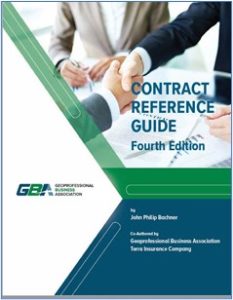
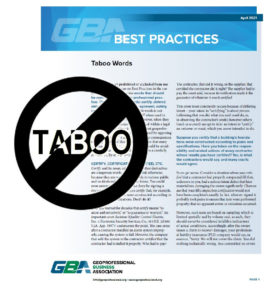
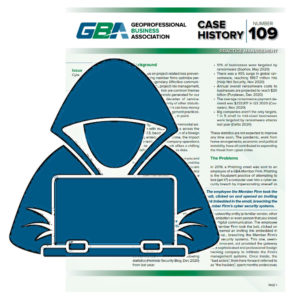 hacking enterprise. When an employee of the firm opened an email from an unsuspected contact, and clicked on a link, the hackers reached the Firm’s management systems. Once they got access to the systems, the infiltrators spent months learning about the operations, information storage and data, unbeknownst to anyone. After obtaining and securing all that they needed, they locked the access to the IT systems, including emails and files and demanded seven-figure sum of money to release the records.
hacking enterprise. When an employee of the firm opened an email from an unsuspected contact, and clicked on a link, the hackers reached the Firm’s management systems. Once they got access to the systems, the infiltrators spent months learning about the operations, information storage and data, unbeknownst to anyone. After obtaining and securing all that they needed, they locked the access to the IT systems, including emails and files and demanded seven-figure sum of money to release the records. are words that are used incorrectly in written and oral communication, from the belief they mean something that other words mean. One of the most common of these shows up only in writing it’s, when used to indicate the possessive form of it; i.e.,
are words that are used incorrectly in written and oral communication, from the belief they mean something that other words mean. One of the most common of these shows up only in writing it’s, when used to indicate the possessive form of it; i.e.,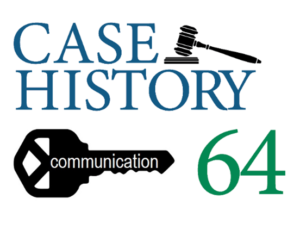 that have happened to geoprofessional firms. GBA Case Histories are unique because our members share real-life stories of problems that impacted their businesses. They also include the outcomes of corrective action, and lessons learned.
that have happened to geoprofessional firms. GBA Case Histories are unique because our members share real-life stories of problems that impacted their businesses. They also include the outcomes of corrective action, and lessons learned.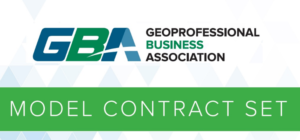 GBA Legal Affairs Committee
GBA Legal Affairs Committee I would grab handfuls of dirt and eat it. My mother told my doctor about this odd habit, and the doctor told her not to worry about; it was not harmful. “You are what you eat”; I ate soil as a toddler and there began my career as a geoengineer.
I would grab handfuls of dirt and eat it. My mother told my doctor about this odd habit, and the doctor told her not to worry about; it was not harmful. “You are what you eat”; I ate soil as a toddler and there began my career as a geoengineer.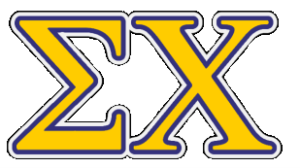 opportunities to experience other cultures and international practices. My international travel took place before the internet was widely available or global cell phone connections; I was on my own to solve problems by working with local engineers, drillers, and contractors who often did not speak English. I learned that if I understood local cultures and learned some of their language, I could accomplish far more than if I just showed up and started giving orders. I was promoted to lead a group of 15 geotechnical engineers and geologists. However, I received no leadership or management training. Therefore, I was a poor leader in that first opportunity, but I learned much. At that time, my wife and I had two young children at home, and the frequent travel became too much of a burden; it was time for a new job.
opportunities to experience other cultures and international practices. My international travel took place before the internet was widely available or global cell phone connections; I was on my own to solve problems by working with local engineers, drillers, and contractors who often did not speak English. I learned that if I understood local cultures and learned some of their language, I could accomplish far more than if I just showed up and started giving orders. I was promoted to lead a group of 15 geotechnical engineers and geologists. However, I received no leadership or management training. Therefore, I was a poor leader in that first opportunity, but I learned much. At that time, my wife and I had two young children at home, and the frequent travel became too much of a burden; it was time for a new job.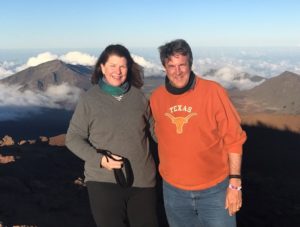 Kelsey and Paige, who have recently been engaged and married. Molly and I are enjoying life as empty nesters and whenever possible we pursue my great passion of travelling to interesting places. We are also committing more of our time to service in volunteer efforts. I also enjoy baseball, Kansas Jayhawk basketball, reading history, and exploring my faith.
Kelsey and Paige, who have recently been engaged and married. Molly and I are enjoying life as empty nesters and whenever possible we pursue my great passion of travelling to interesting places. We are also committing more of our time to service in volunteer efforts. I also enjoy baseball, Kansas Jayhawk basketball, reading history, and exploring my faith.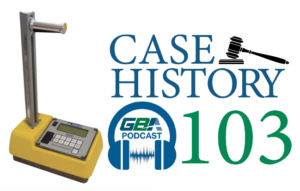 on real-life events that have happened to geoprofessional firms. GBA Case Histories are unique because our members share real-life stories of problems that impacted their businesses. They also include the outcomes of corrective action, and lessons learned.
on real-life events that have happened to geoprofessional firms. GBA Case Histories are unique because our members share real-life stories of problems that impacted their businesses. They also include the outcomes of corrective action, and lessons learned. spend time and effort pursuing a client or a project. Some projects have technical risks that make them more likely to end up in a lawsuit. For some projects, the selection will be made on price, and we may be unable to make a reasonable profit with the fee required to get the work. Some projects may cause issues with existing clients or may have social implications that your staff may not support.
spend time and effort pursuing a client or a project. Some projects have technical risks that make them more likely to end up in a lawsuit. For some projects, the selection will be made on price, and we may be unable to make a reasonable profit with the fee required to get the work. Some projects may cause issues with existing clients or may have social implications that your staff may not support.